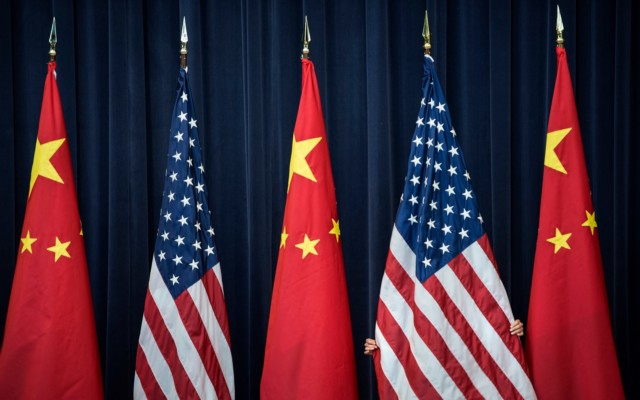![]() On Monday, August 13, at a U.S. military base in upstate New York, President Donald Trump signed the $716 billion National Defense Authorization Act (NDAA) for fiscal year 2019 into law. NDAA 2019 is atypical in terms of its early signing; it is the first time since 1988 that Congress has sent the defense budget bill to the president’s desk prior to adjourning for its August recess.
On Monday, August 13, at a U.S. military base in upstate New York, President Donald Trump signed the $716 billion National Defense Authorization Act (NDAA) for fiscal year 2019 into law. NDAA 2019 is atypical in terms of its early signing; it is the first time since 1988 that Congress has sent the defense budget bill to the president’s desk prior to adjourning for its August recess.
NDAA 2019 is crafted in the vein of the Trump Administration’s January 2018 National Defense Strategy (NDS), which had referred to China as “a strategic competitor using predatory economics to intimidate its neighbors while militarizing features in the South China Sea.” The bill declares that “long-term strategic competition with China is a principal priority for the United States” and proceeds to reform and resource the Defense Department to implement this policy. This characterization of Sino-American relations is neither accurate nor fair; it is not fated that the U.S. and China are – or will become – strategic competitors.
Beyond this unfortunate broad-brush mischaracterization, there are a number of specific anti-China provisions in the bill, now signed into public law.
By way of Section 1258, the administration is encouraged to support the acquisition of asymmetric warfare and undersea warfare capabilities by Taipei. To soften the ground for future port visits by U.S. Navy warships, the bill proposes the dispatch of a U.S. hospital ship to the island.
By way of Section 1259, China is to be barred from participating in future Rim of the Pacific (RIMPAC) exercises until it ceases “all land reclamation activities in the South China Sea” and remove[s] “all weapons from its land reclamation sites.” A report on China’s military activities in the South China Sea is to be furnished by the Defense Department too, with elements of that report including high-resolution images released to the public.
Funding cuts are also slated for Chinese language programs at universities that host Confucius Institutes and the Pentagon is barred from procuring Huawei or ZTE equipment, going forward.
The longest-lasting impact of 2019 NDAA will be felt in the area of China-related inward and outward investment screening measures. The bill subjects the mandate of the Treasury Department-led Committee on Foreign Investment in the United States (CFIUS) to its most comprehensive revision – and expansion – since 2009.
By way of Section 1703, any merger, acquisition or takeover of a U.S. company or “other investment” in a U.S. company by a Chinese entity that could lead to the disclosure of “material non-public technical information” related to sensitive personal data, critical infrastructure or critical technologies, is now to be scrutinized by CFIUS with a fine-tooth comb. A mandatory report on Chinese investment in the U.S. is to be compiled too, including the extent to which the pattern of investments aligns with Beijing’s ‘Made in China 2025’ industrial policy plan. Simultaneously, on the export control front, a regular, on-going inter-agency process to identify “emerging and foundational technologies” is to be established, so as to prevent the leakage of these technologies across the Pacific. The chilling effect of these provisions on two-way investment and technology transfer ties should not be discounted.
NDAA 2019 does not mandate the architecture of geo-strategic or geo-economic containment of China. In its Cold War-reminiscent style of thinking and planning, however, the bill has the potential to reshape U.S.-China strategic ties for the worse. China, the U.S. and Asia will all be poorer off in that case.
Sourabh Gupta is a senior fellow at the Institute for China-America Studies (ICAS) in Washington, D.C..The analysis represents their views alone.
 CGTN America
CGTN America (FILES) In this file photo taken on July 10, 2013, a staff member adjusts a USn flag before the opening session of the US and China Strategic and Economic Dialogue at the US Department of State in Washington, DC. (AFP PHOTO / Brendan SMIALOWSKI)
(FILES) In this file photo taken on July 10, 2013, a staff member adjusts a USn flag before the opening session of the US and China Strategic and Economic Dialogue at the US Department of State in Washington, DC. (AFP PHOTO / Brendan SMIALOWSKI)
